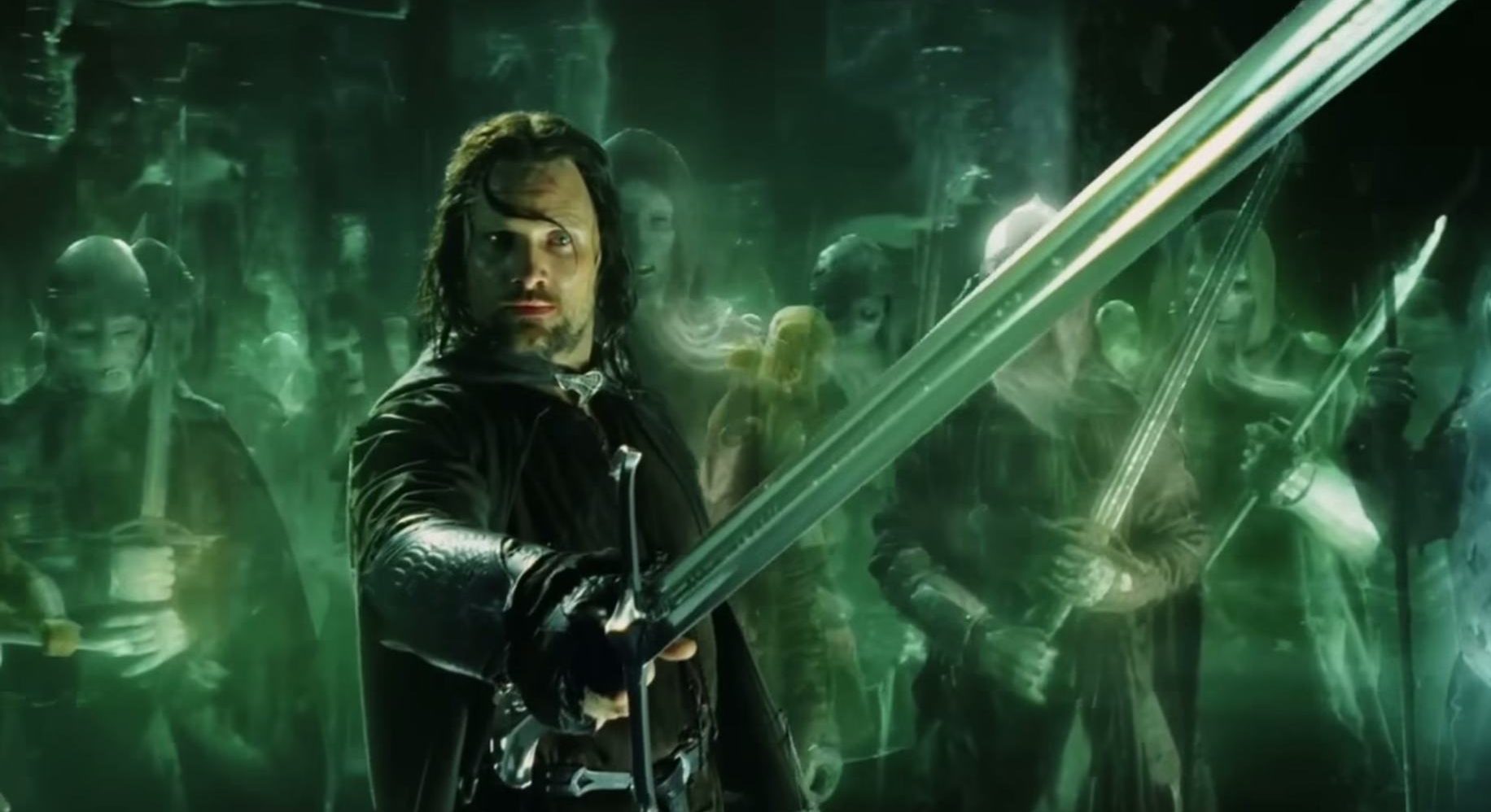Rings Of Power Episode 4 had a lot of Easter Eggs and references to both Tolkien’s books and the Lord of the rings movie series. We had a lot of references to Elros in Pharazon’s speech and some details about Adar. We got to see the Narsil sword and Palanttiri (vision showing the crystal ball that Gandalf used) that we saw in the Lord of the Rings Trilogy. Let’s talk about all of the Easter eggs and References in Rings Of Power Episode 4.
In The Rings of Power episode 4, Galadriel requests her Nmenórean captors for help hunting Sauron’s minions, but Queen Regent Mriel and Pharazôn turn their backs on her. Theo later encounters more than he hoped for during a supply run back to Tirharad. If not for Arondir, who shows up with a message from season 1’s villain and some impressive archery, Theo undoubtedly would have been killed.
In the closing scenes of “The Great Wave,” Galadriel and her newfound Nmenórean friends are on their way to the Southlands, and Durin IV is following Elrond back to Lindon as work on Celebrimbor’s enormous spring forge proceeds quickly.
Here are all the Rings Of Power Episode 4 Easter Eggs:
Pharazon’s Speech About Elros
A few notable references are Pharazon’s speech at the start of the episode, he says “we are sons and daughters of the Edain”, which as we heard in the last episode, where the men of the First Age who sided with the elves in the ongoing wars against Morgoth. He then says “of Elros Tar-Minyatur, whose host conquered Morgoth himself.” Now Tar-Minyatur is the title Elros takes in the elven language of Quenya meaning “High first-ruler”. The bigger point that drew my attention was Pharazon’s assertion that it was Elros’ host who conquered Morgoth.
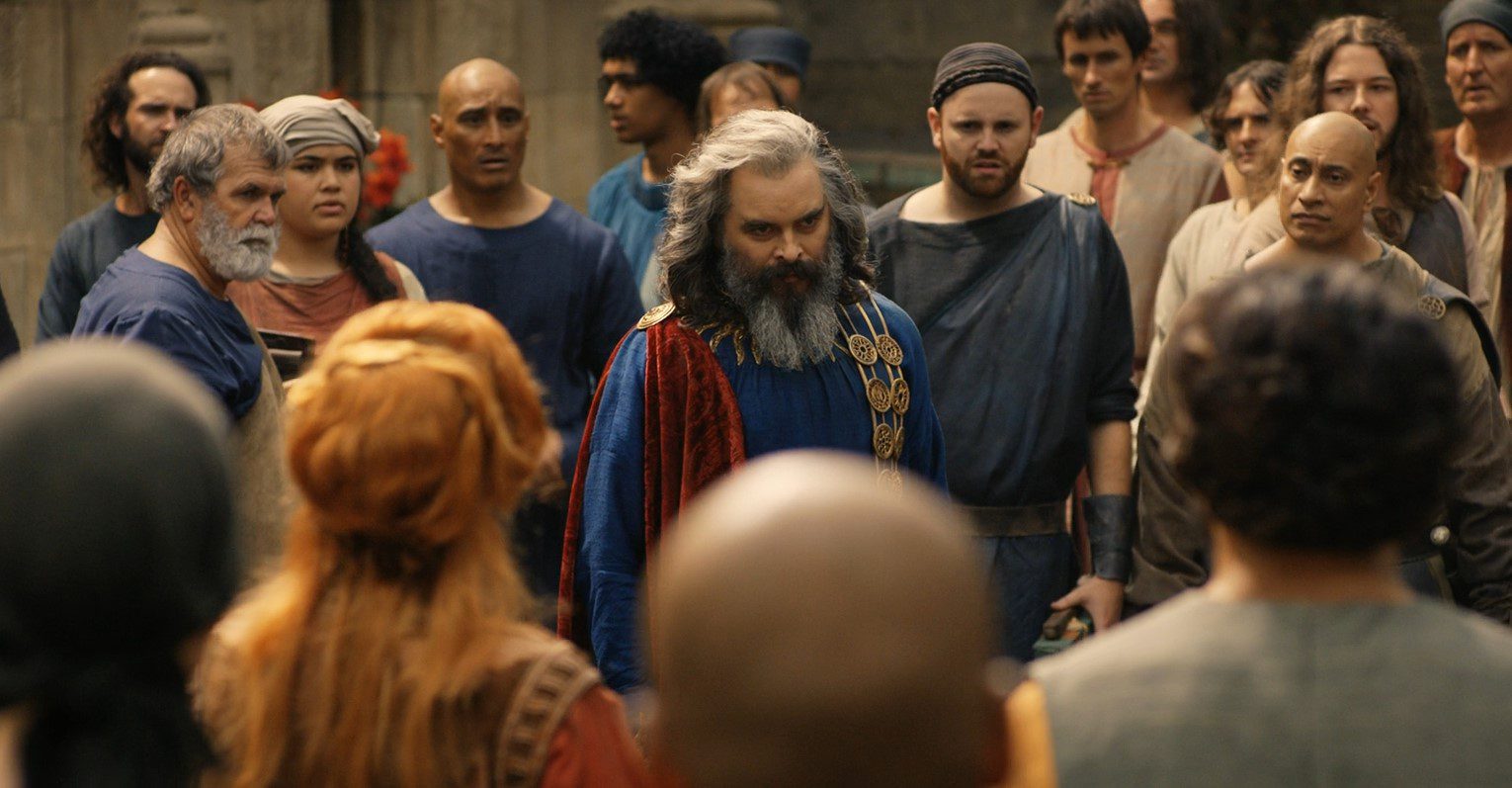
What I think we have here is a demonstration of some revisionist history of the Numenoreans, because later in this very episode we will hear from a far more reliable source in the form of Elrond. The twins would have been just 13 years old at the beginning of the War of Wrath, and the idea that Elros would’ve been in charge of the entire war against Morgoth by the war’s completion when is 55 is highly unlikely.
Pharazon goes on to puff up the Men of Numenor mentioning their great achievements like raising the capital of Armenelos, and promising that they can trust in him and that elves will never control Numenor. A quick note here because Armenelos is never mentioned in The Lord of the Rings or its appendices – only in the Silmarillion and Unfinished Tales, so this is further proof that Rings of Power can indeed get permission to use things outside what they strictly bought the rights to.
Is Adar Sauron?
We saw Adar in this episode. Lots of theories to go around here – some think Sauron, but I tend to think he’s more likely a corrupted elf, or perhaps someone who could even be attempting to set himself up as the new dark lord until Sauron comes around to put him in his place. One kind of out there theory that makes a fair amount of sense is that he is Maglor, the only son of Feanor that we are not told of his death. We know his hand was burned by a silmaril, which could explain the single armored hand, but it’s hard to say how they would make this fit with the story without having to explain a lot of unrelated stuff.
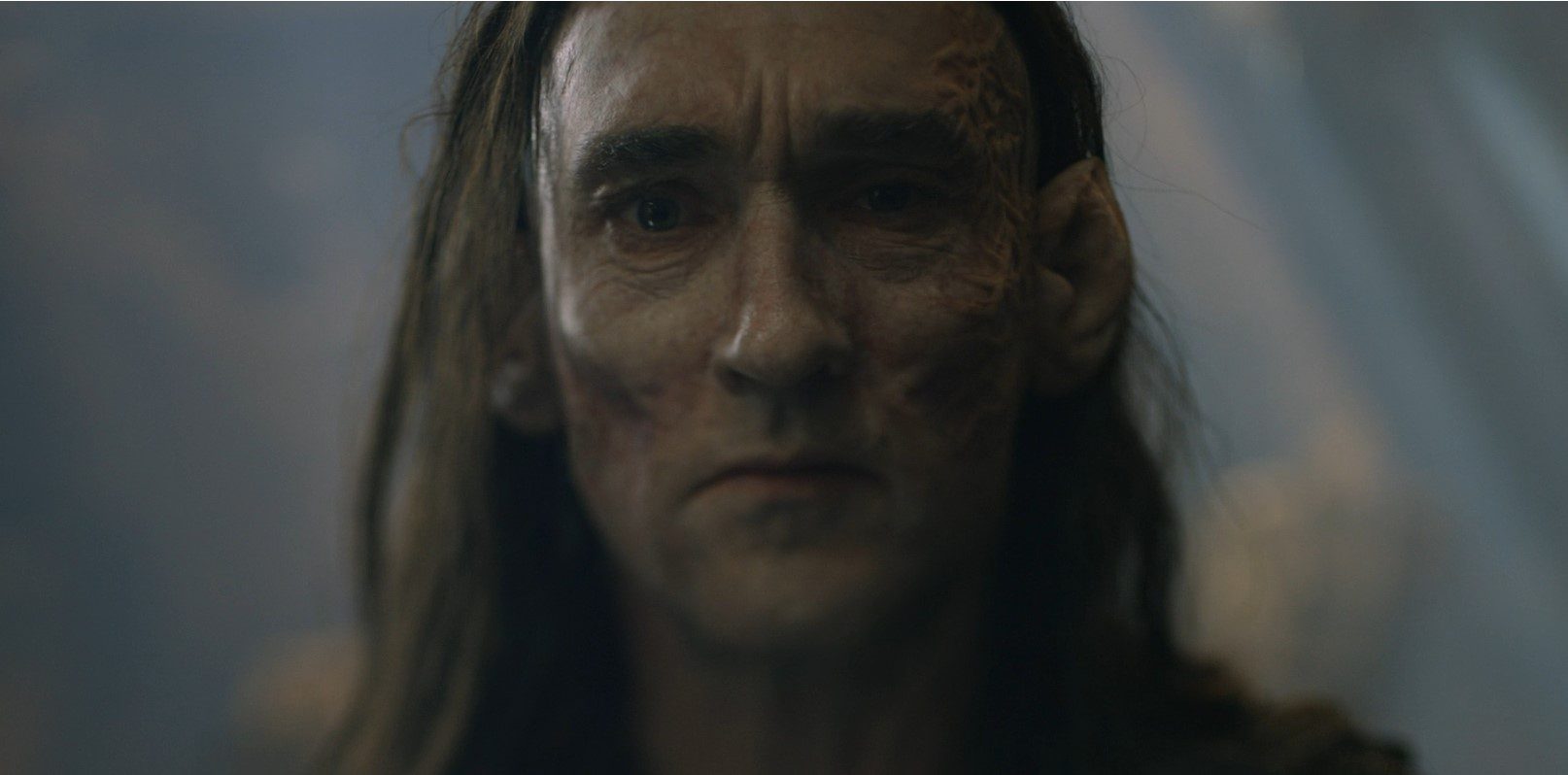
Adar attends the orc Arondir stabbed in the neck and seemed to show genuine care for him, and at first, I thought, oh, this dude’s gonna heal him – but nope, he stabs him, but he does seem sad about it. We see the orc had taken one of the elven chest plates as Adar wipes off his knife. One of the orcs bows down and says “Nampak Uglursha” before taking off the chest plate. I don’t have the literal translation yet, but Jed Brophy was kind enough to fill us it is indeed a sort of “rest in peace” sentiment and not a “thanks for the cool vest.”
The Place Where Arondir Is From
Adar talks to Arondir asking where he was born. Arondir says Beleriand, which really surprised me because the map of the world from the prologue sequence in episode 1 completely omitted the lands of Beleriand. Thankfully, I just so happen to have my Beleriand map, so we can take a look. Adar guesses that Arondir is from the mouth of the river. Presumably, he means the river Sirion, which indeed has a mouth feeding into the sea.

Arondir doesn’t answer, so we don’t know if that’s the case, but it’s interesting because the inhabitants of the Mouths of Sirion are a group of Teleri elves known as Falathrim, led by Cirdan the Shipwright and would also include Gil-galad – though Noldorin refugees from Gondolin would later join them. Ismael Cruz Cordova has said that Arondir is a Silvan elf, which would make him far more likely to live in Ossiriand. As for Adar, he says he went down the river once when he was young, and I noticed it seems like his armor even has the depiction of a river on it perhaps.
Narsil Sword From Lord Of The Rings Movie
When Galadriel breaks into the King’s room, Miriel leads her up a stairway. And here we get what will no doubt be one of the big potential references of the episode everyone will catch, as Galadriel takes a long look at a sword that looks VERY similar in design to Narsil from the PJ films. While I think many, including myself, assumed Narsil would be passed down the line of the Lord of Andunie, there’s no actual record of the sword before it comes into Elendil’s possession in the late Second Age.
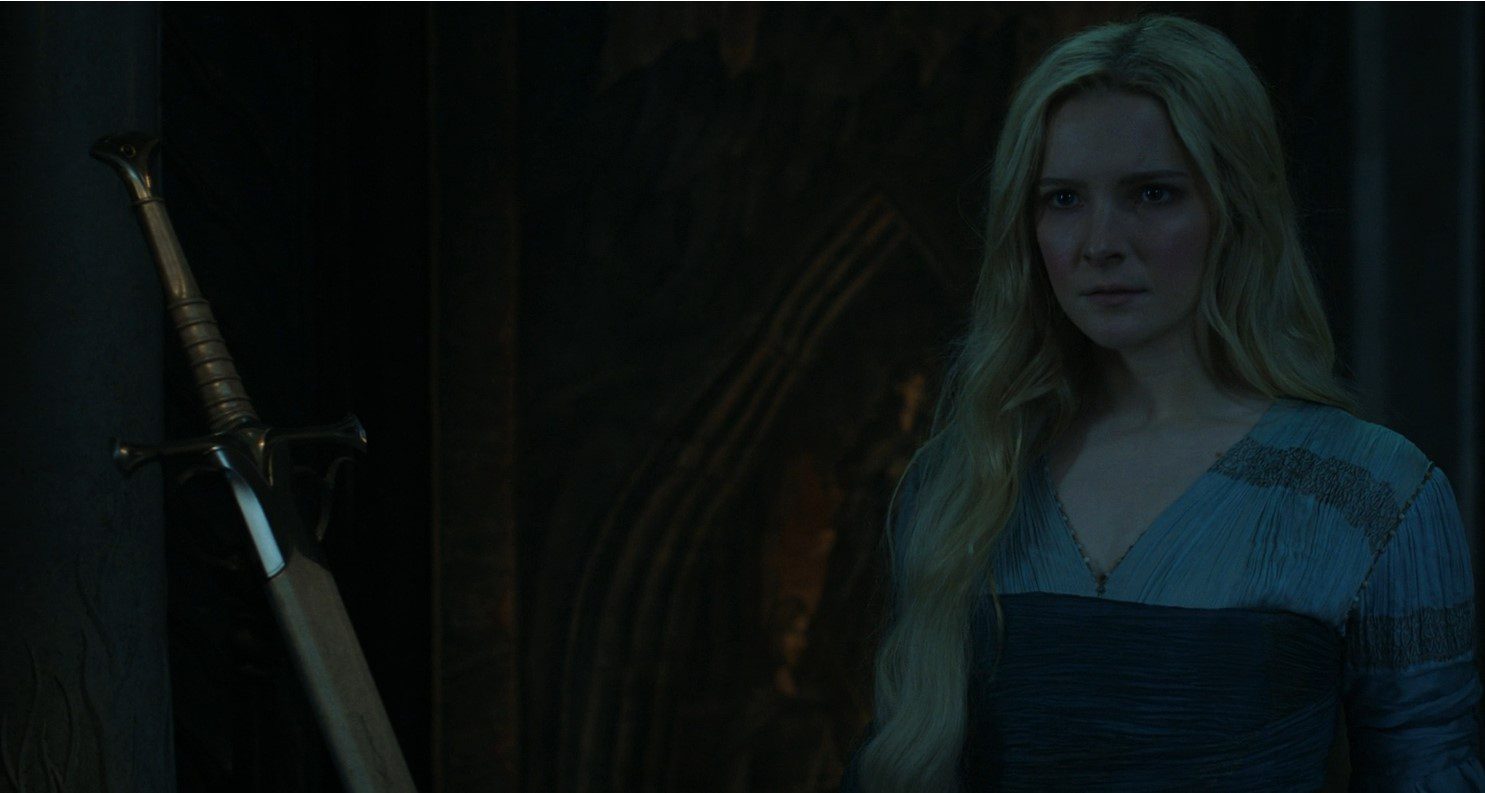
Also behind Galadriel, we have what appears to be a depiction of Beren and Luthien, with Luthien standing and Beren holding a Silmaril in his hand. The very next shot features an axe, which is almost certainly Dramborleg – the great axe of Tuor the grandfather of Elrond and Elros. This axe was known to be among the heirlooms of the rulers of Numenor. And sure enough, it’s sitting near a swan shield, which also belonged to Tuor.
Can Palantiri Show You The Future?
When Galadriel looks into the Palantir she sees the same vision that the queen had where Numenor is destroyed by the sea. Now the natural question that will arise is – can the palantiri do more than communicate with one another? Can they see into the future? The first answer is yes, and the second is more questionable.
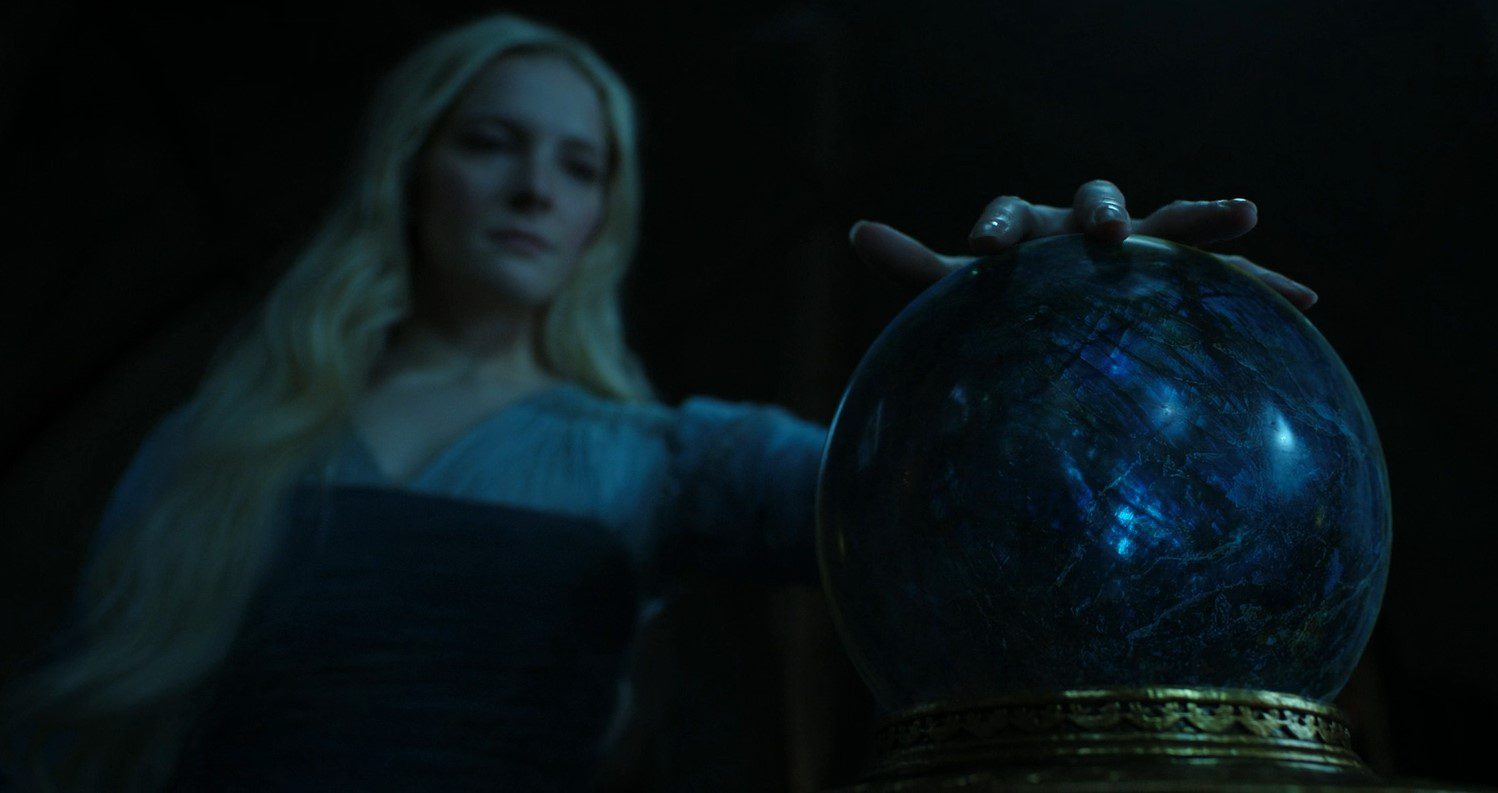
As Gandalf says in the Two Towers: “My heart still yearns for the opportunity to put my will to the test by looking across the vast expanses of water and time to Tirion the Fair and seeing the unfathomable hand and intellect of Fanor at work, while both the White Tree and the Golden were in bloom!” Even though he only refers to the past, Gandalf is certain that he can use a palantir to “see over the seas of water and of time.”
Another potential easter egg here is I think we might see the actual Dragon helm of Dor-Lomin behind Galadriel. It’s really hard to make out, but I think it might have the dragon on top and we are seeing it in its full dwarven face-masked glory. We are never told what happened to the helm after Hurin is given it after the death of his son Turin, so having the helm of a heroic, though tragic, figure among the Edain end up in Numenor isn’t much of a stretch.
The Roots And Rocks Remember Them
When Arondir inquires as to why the Orcs refer to him as the father, Adar responds “Many lies have been told to you. Some are so ingrained that the rocks and the roots now accept them. It would essentially take the establishment of a new world to sort it all out.” This reference to roots, rocks, and even trees understanding things has previously been made in regard to another part of “The Rings of Power” story in Middle-earth.
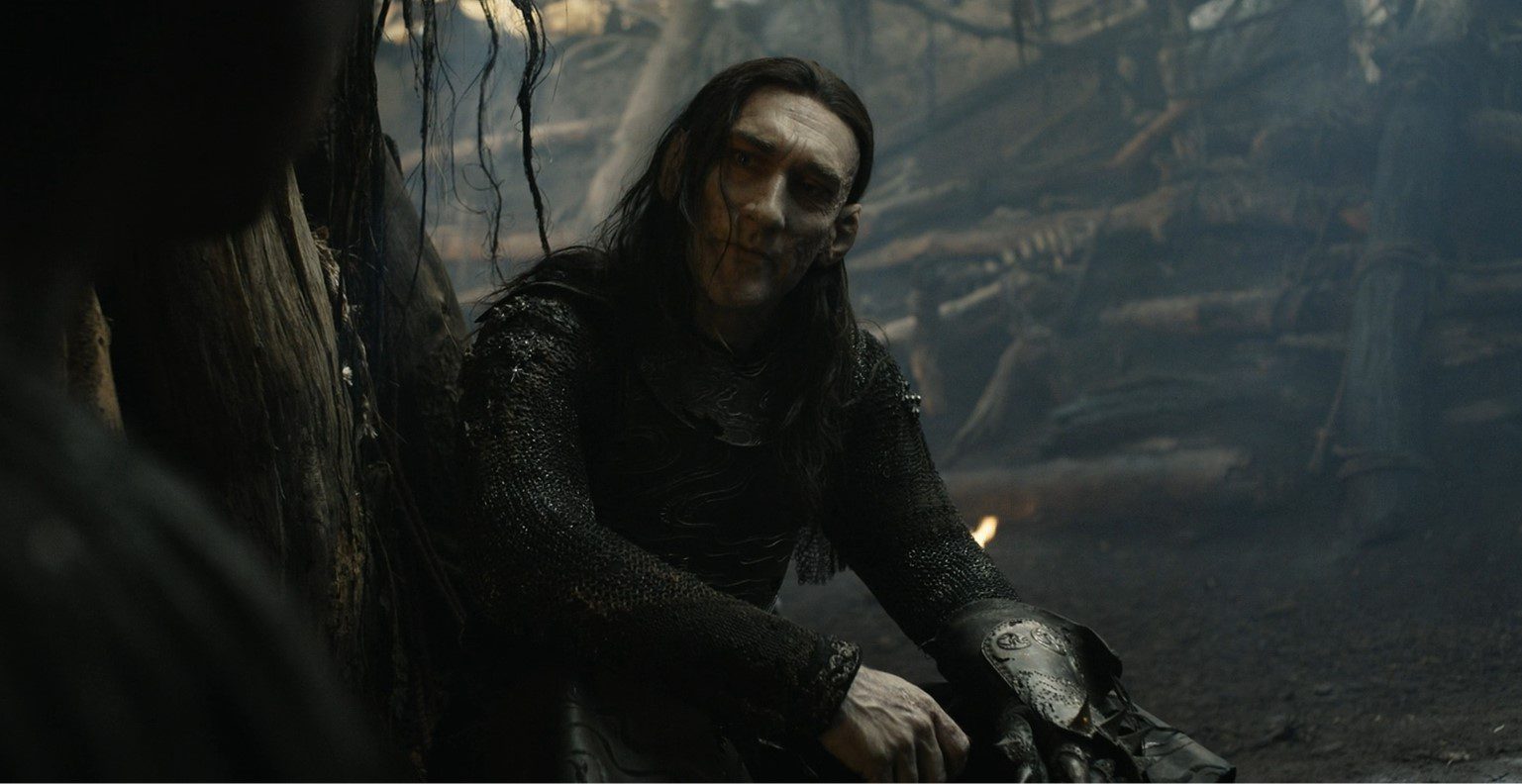
Before arriving at Moria in “The Fellowship of the Ring,” Frodo and his companions travel through the land that was formerly the Elvish dominion of Eregion; this is the region governed by Celebrimbor in the show, “The Rings of Power.” When it comes to Legolas remarks in The Lord of the Rings that ” The country is abandoned and the Elves have long since disappeared, so the trees and the fields no longer remember them. Only I can hear the stones bemoaning their loss: Deep they dug us, fair they crafted us, high they built us, but they are gone. They’ve vanished. The Havens were sought after long ago.”
The elves in Tolkien’s works have a strong bond with humanity. As a result, unlike humans, dwarfs, and hobbits who occasionally stumble about while making elephant-like noises, elves are constantly conscious of their surroundings and how their actions affect them. You can be sure that they are hearing things that our mortal ears are not, whether it is Legolas listening to the Eregionian rocks or Adar trying to change a past that is deeply ingrained in the very fabric of the universe.
Three Doors
In Episode 4, Elrond travels to Khazad-dûm to see why Durin IV is keeping his distance from Celebrimbor and him. However, when he arrives at his Dwarven friend’s house, Durin is not there. Disa offers a few possible reasons before she suddenly recalls that “He was gone to mine Quartz Chasm today.” The two continue to avoid the truth for the remainder of the talk after Elrond immediately detects the lie.
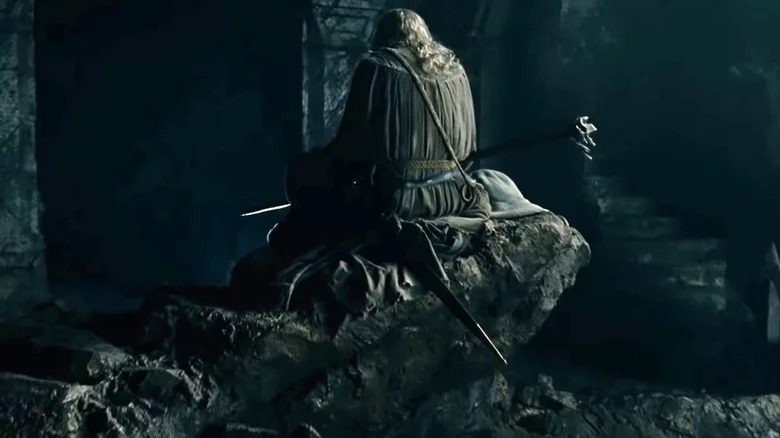
Disa casually asks about Elrond’s experience with “The three-door guard” while mentioning possible locations where Durin could be. Khazad-dûm undoubtedly has several places with multiple doors, but this must be referring to a specific place.
Thousands of years later, when “The Fellowship of the Ring” travels through Moria, Gandalf confidently leads them on every leg of the trek in the dark… until they come to a particularly difficult roadblock that the wizard can’t recall. Where are we talking about? A location when the path divides into three separate lanes. They stop and give Gandalf some time to consider the situation because it is so confusing. In the written version, as they do that, Gimli remarks, “This appears to be a guardroom, designed for the observation of the three passages.” They then seek shelter in a nearby guardhouse. Is this the “three-door guard” that “The Rings of Power” refers to? We think it’s likely.
A Sea Monster
Late in Episode 4, Isildur and Eärien cross paths, and the former informs his sister that he and his colleagues have been expelled from the sea guard. Behind the talking siblings, a huge mural can be seen. It appears to depict a ship full of sailors engaged in a fight with a large sea serpent-like creature. It’s a location that is very familiar after the 2nd episode, where a massive creature attacks the boat with Galadriel and Halbrand.
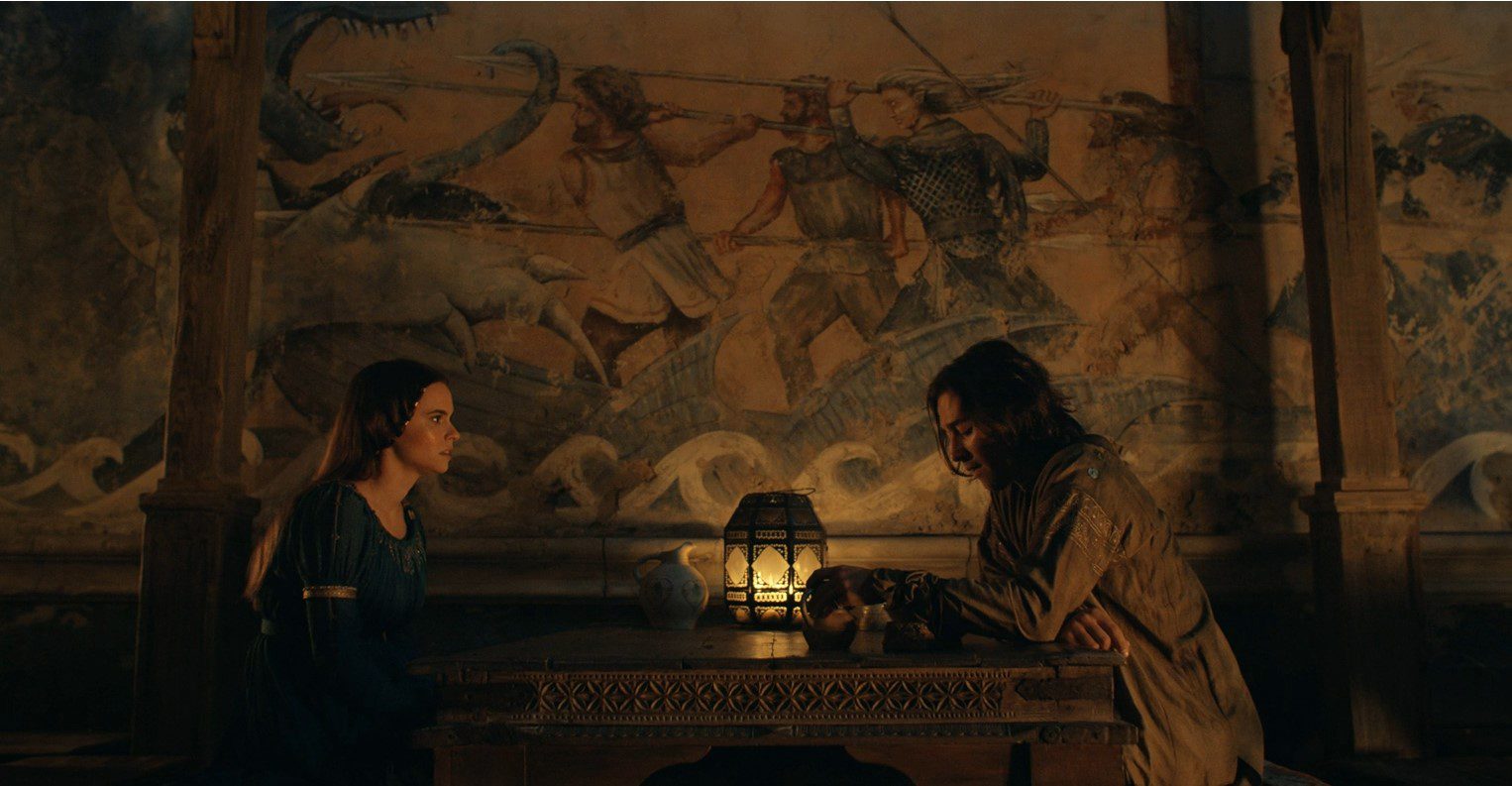
But the monster isn’t what this Easter egg is about. It refers to the sailors: One of the figures is unmistakably an Elf in elegant armor with long, blond hair and sharp ears, unlike the others of them who are hairy-looking Humans with long beards and heads of dark hair. It’s not clear if this refers to a specific incident that we’ll learn about later, but it’s interesting to see elves in a Nmenorean mural.
Right now, you might only anticipate seeing something like this in the West, the elf-friendly region of Isildur and Eärien’s own land. Elves used to frequently travel to this region, bringing presents, establishing friends, and, probably in the “The Rings of Power” universe, occasionally assisting the local Men in killing a sea monster.
Galadriel’s Vision-Mirror
In the fourth episode, Queen Míriel finally begins to make some significant progress in her partnership with Galadriel when she helps to bring the stubborn Elf to take a look at her Palantir. Although she has used seeing stones in the past, the princess cautions her Elven visitor that this one is extremely different since it is focused on a particular vision—that of a Great Wave crushing the island realm. After seeing for herself, Galadriel immediately relieves Mriel’s anxieties by saying that Palantir shows various visions, adding that “some which will never come to pass.”

It is obvious that the future Lady of Lorien was moved by this statement since thousands of years later, she makes a very identical statement. If you have read “Fellowship of the Ring” book then might have recalled, that when Galadriel describes her future-seeing mirror to Sam, she tells “Keep in mind that the Mirror has shown many things, and they have not all yet come to pass. Some never happen, unless people who see the visions deviate from their course to stop them. The Mirror poses a threat as a moral compass.”
It would seem that, at least in the “Rings of Power” adaption, Galadriel starts to acquire this great knowledge back in the Second Age as she decides what to do about visions of Nenmenor’s destruction.
Also Read: Rings Of Power Episode 5 Trailer Breakdown: Adar Is Coming For A War

